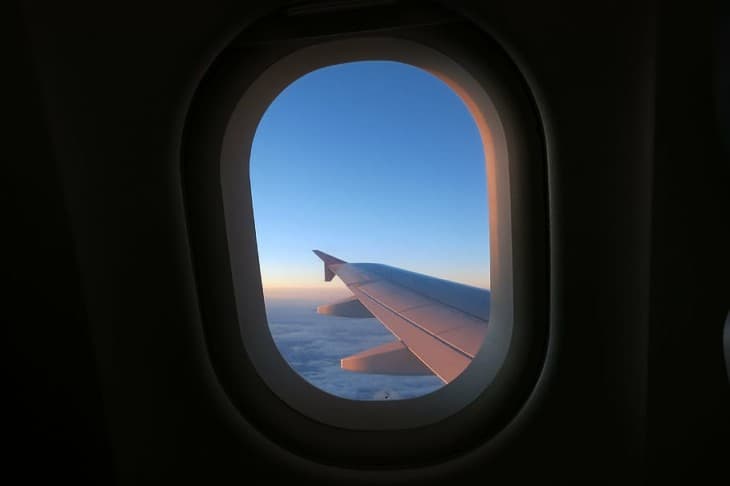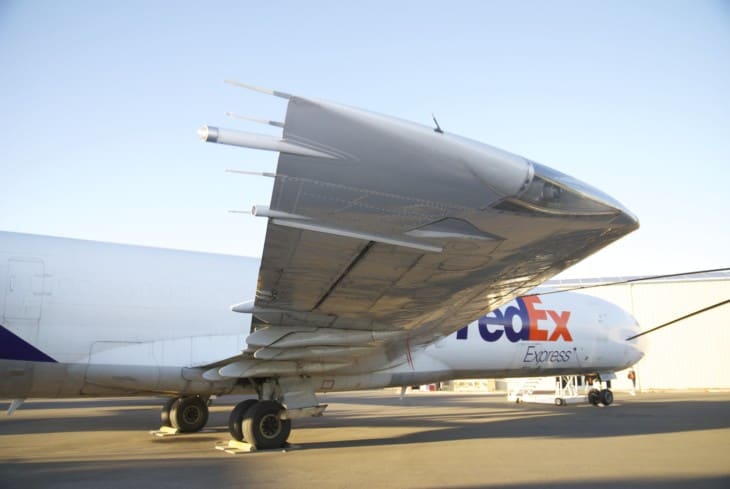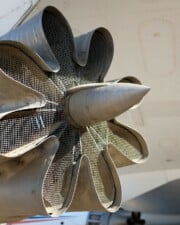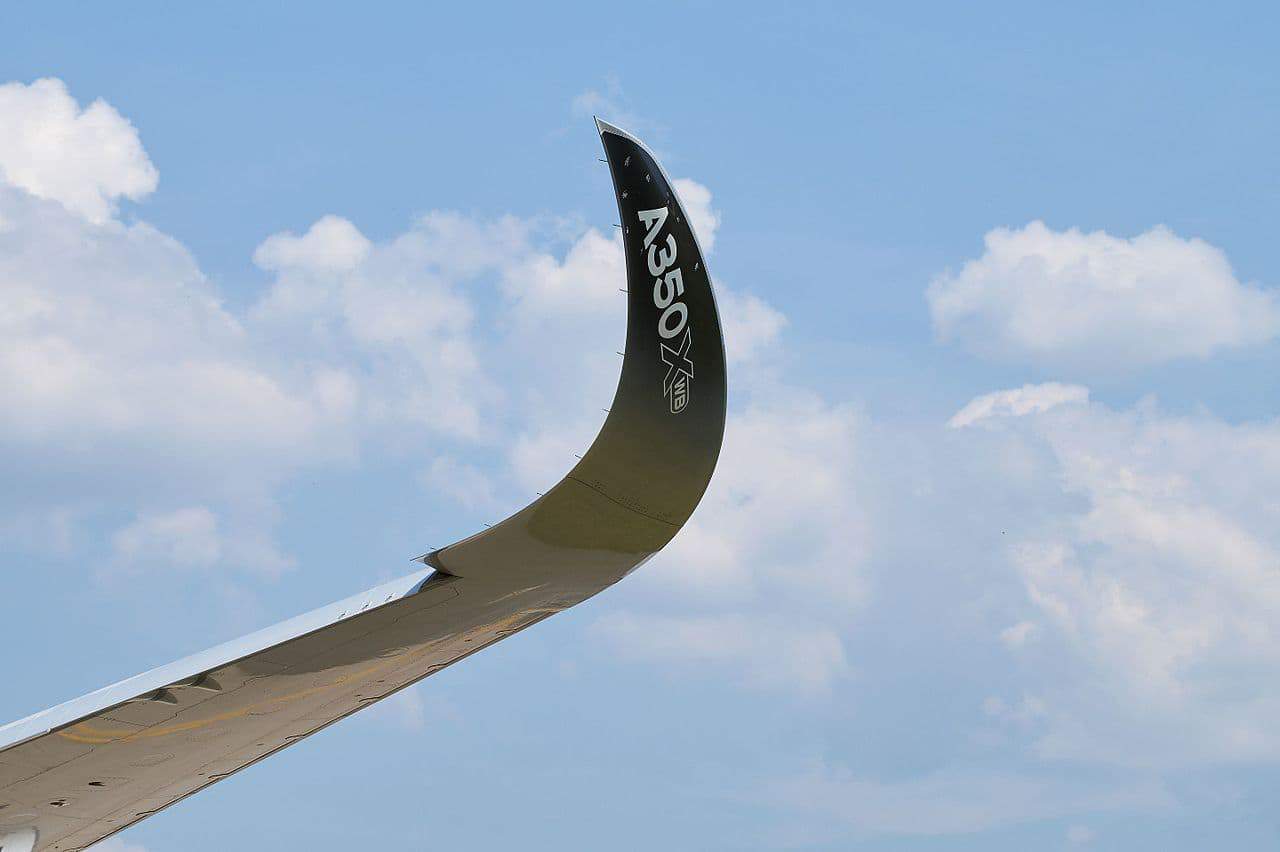When Wilbur and Orville Wright designed the first successful powered airplane, they knew that they would have to control the wings’ lift to keep the airplane level. To roll the plane left and right, they devised a system to warp the shape of the wings. To control the wing warp, the pilot had to swing their hips one direction or the other! Thank goodness a more convenient way was found to operate big planes, or else pilots would have to be great dancers!
How Do Ailerons Work?
Most modern airplanes don’t warp their wings–they use ailerons instead. The ailerons are the flight controls that roll the airplane around its longitudinal axis.
Ailerons work by creating more lift on one wing and reducing lift on the other so that the wing with less lift drops and the one with more lift climbs. The pilot moves the ailerons and rolls the airplane by turning the control wheel to the left or right–no dancing required.
What are Ailerons?
Ailerons are one of the three primary flight controls on an airplane. Each of these three pilot controls changes the direction the plane is flying through the air. They move the plane around one of the three axes of flight. The three flight controls and axes of flight are–
- The ailerons control the roll of the airplane around the longitudinal axis (from nose to tail).
- The elevator controls the airplane’s pitch around the lateral axis (wingtip to wingtip)–it moves the nose up and down.
- Finally, the rudder controls the plane’s yaw around the vertical axis–it moves the nose left and right.

Flight controls, including ailerons, are covered in Chapter 6 of the FAA’s Pilot’s Handbook of Aeronautical Knowledge.
How do Ailerons Work on a Plane?
To understand how ailerons work, you must first understand a little bit about how a wing makes lift.
A plane’s wing is an airfoil shape, which forces the air passing above the wing to move faster than the air below it. That faster-moving air exerts less pressure. The higher pressure below the wing tried to fill in the lower pressure, and since the wing is in the way, it lifts the plane up.

While flying along, if a pilot wants to make more lift, they need to do at least one of two things. They need to fly faster, which will increase the difference between the higher and lower pressures, making more lift. Or they need to increase the angle of attack.
The angle of attack is the angle between the chord line of the wing and the relative wind. When it is increased, the wing makes more lift. The chord line is simply an imaginary line drawn from the leading edge to the trailing edge of the airfoil.
Ailerons work by moving the chord line. When the aileron, mounted on the wing’s trailing edge, moves down, it changes the chord line. The result is that the angle of attack is increased at the location of the aileron. That area of the wing makes more lift than the rest.
Since ailerons are mounted on the outer wingtips, a small amount of extra lift will cause the airplane to twist, or roll, away from the dropped aileron.
On the other side of the plane, the opposite aileron moves up. This change reduces the angle of attack on that wing, making less lift than the surrounding wing. That wingtip drops. When combined with the motion of the other aileron, the airplane rolls quickly one way or another.
From the pilot’s point of view, when the control stick is moved to the left, the left aileron should come up, and the other one should go down. In a right turn, the right aileron goes up and the left one down.
Adverse Yaw
For the airplane designer, the big problem with ailerons lies fundamentally in the way that they work.
Whenever lift is increased by increasing the angle of attack, more drag is created as well. This drag is a byproduct of lift, and it’s always there. It’s called induced drag.
In the case of ailerons, the angle of attack is only increased on the wingtip that goes up. That force will cause the airplane’s nose to turn away from the turn. Since this yawing force isn’t helping the pilot turn, it’s known as adverse yaw.
All ailerons make adverse yaw, but in some airplanes, it isn’t very noticeable. Designers have come up with some pretty clever ways to minimize it. For example, some ailerons are designed to add drag to the raised aileron side too. The result is that both sides cause drag, so the nose doesn’t move either direction.
Adverse yaw is the primary reason that airplanes need rudders. The rudder is the flight control that yaws the nose of the plane left or right.
To properly execute a turn in an airplane, the pilot rolls the plane with the control wheel or stick and applies pressure to the rudder pedal in the same direction.

Ailerons vs Flaps
Many people confuse ailerons and flaps. Both controls lie on the wings’ trailing edges and look similar, but they function differently and are used for different things.
Flaps also work by changing the chord line of the wing to increase the angle of attack. Flaps extend equally on each side of the airplane, so lift is uniformly increased along the wingspan. They are used to help the airplane fly more slowly and help pilots make steep approaches to airports without building up too much airspeed.
Flaps are a secondary flight control–they are used to control lift better and make the pilot’s job a little easier. In most planes, flaps are not necessary for safe flight, but they help in several ways. The flaps are extended in incremental steps, and once set, they remain stationary until the flap setting is increased or decreased.
Ailerons, on the other hand, are primary flight controls that are necessary to control the aircraft. They’re located on the outer parts of the wings. When one goes down, the other side goes up. They operate only when the controls are moved in the cockpit, much like the tires move when a driver moves the steering wheel of a car.

Some planes combine the two controls into one control surface. Flaperons are combination flaps and ailerons. They’re found on some planes, and while the idea sounds complicated, it’s pretty simple. All of the work is done in the plane’s design, so from the cockpit, there is no difference to the pilot. Flaperons are most often seen on airliners because they are designed to fly both very fast and very slow.
Types of Ailerons
There are three other main types of ailerons, besides flaperons mentioned above.
Differential ailerons are designed to operate at different amounts, so the raised aileron is put up more than the lowered ailerons is dropped. This creates parasite drag on the down-traveling wing, which equals the induced drag of the raised wing. It doesn’t eliminate the adverse yaw, but it helps.
Fraise ailerons are designed so that a small amount of the control surface also deflects down to make additional drag when the raised aileron travels up. Again, this design adds parasite drag to the downward traveling wingtip to equal out the induced drag made on the other side.
The final type of aileron design is when the controls between the ailerons and rudder are linked. When the pilot applies ailerons to the left or right, a series of springs also apply rudder pressure in that direction. Adverse yaw is still there, but the linkage helps the pilot counter it by applying a little rudder.
Related Posts















